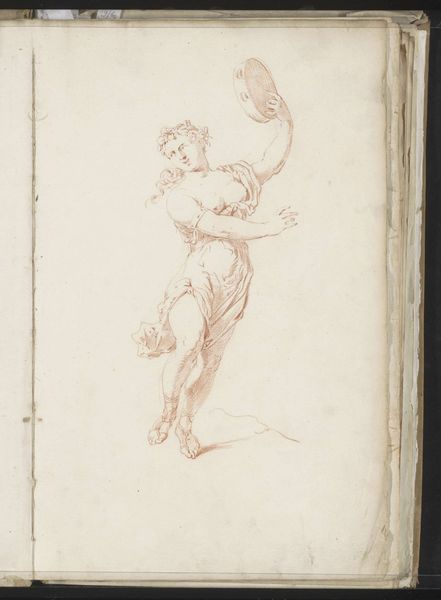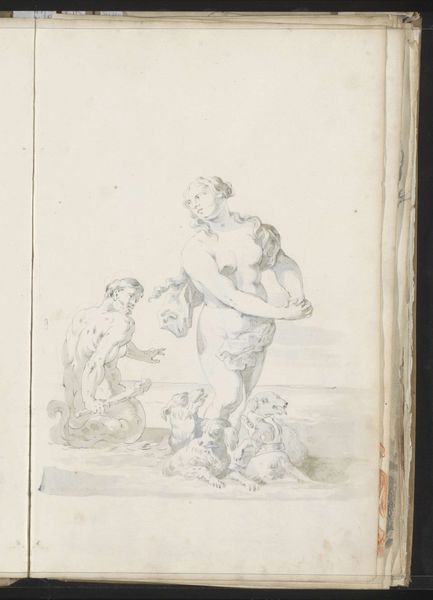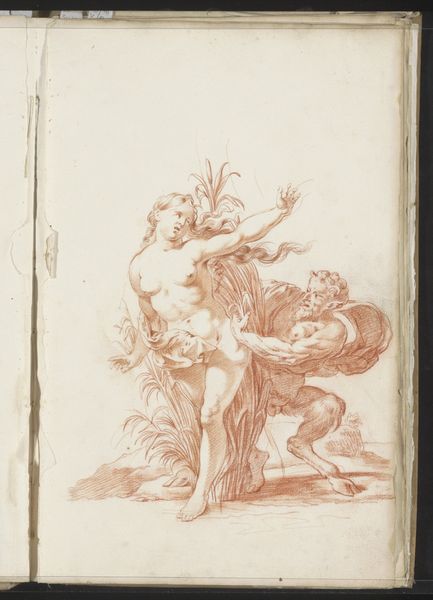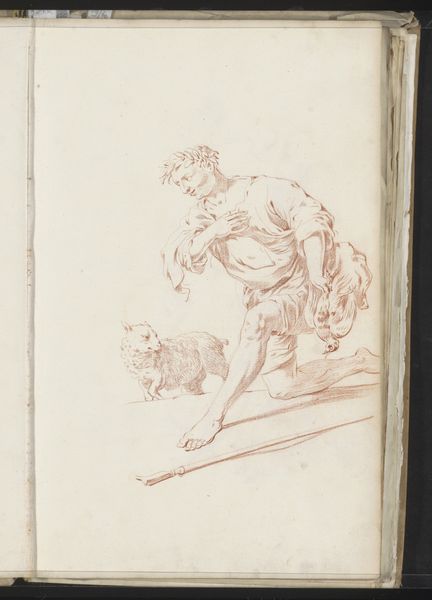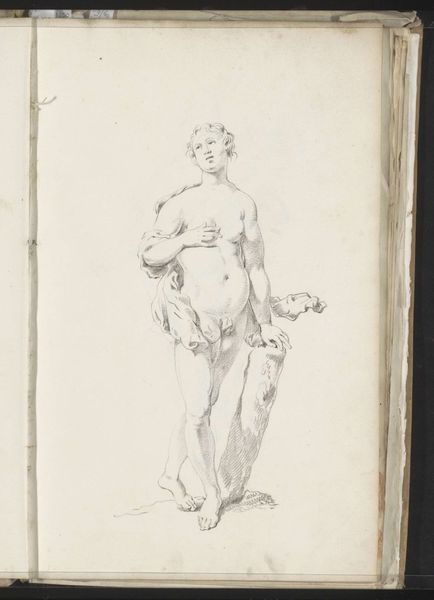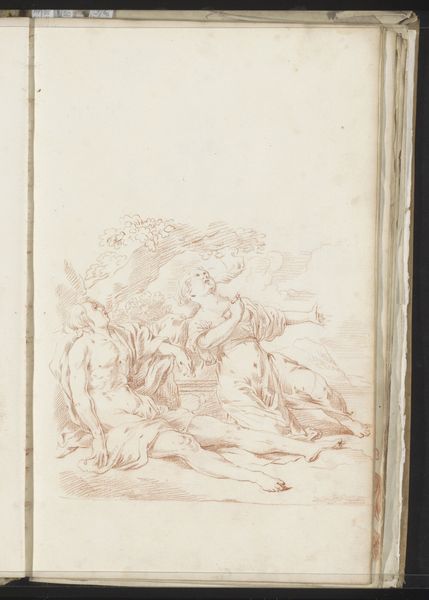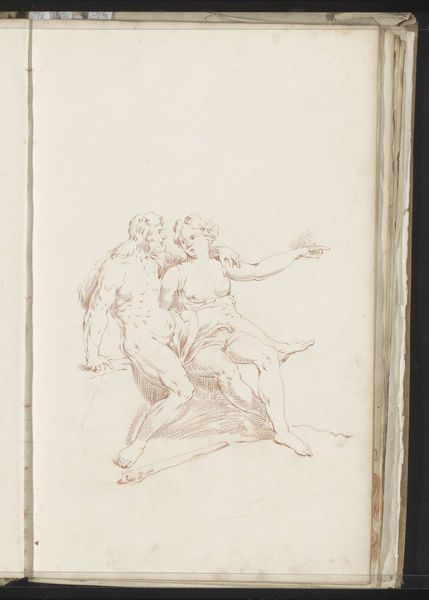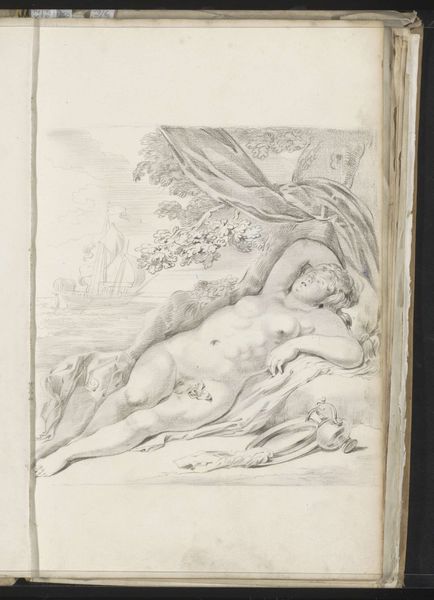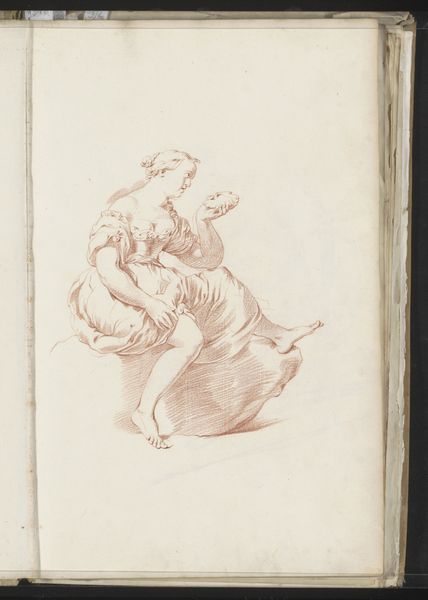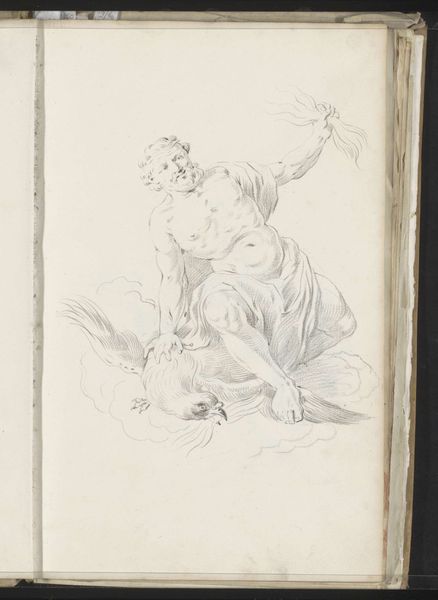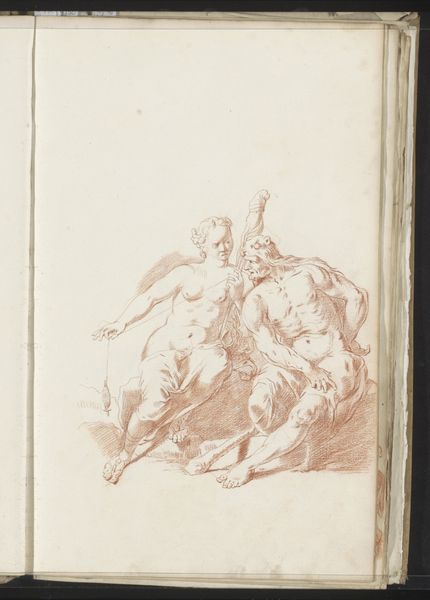
drawing, paper, ink
#
drawing
#
baroque
#
landscape
#
figuration
#
paper
#
ink
#
nude
#
erotic-art
Copyright: Rijks Museum: Open Domain
Curator: Here we have "Naakte Venus met een dolfijn," or "Naked Venus with a Dolphin," a drawing from around 1701 attributed to Jacob Toorenvliet. The piece, rendered in ink on paper, immediately strikes one with its classical theme and delicate lines. Editor: My initial impression is of understated eroticism. The subtle blush of the ink lends a soft, fleshy quality to Venus’ form. I'm also intrigued by the process; the linear nature, like an etching almost, which focuses attention on shape and form above color or painterly quality. Curator: Indeed. It exemplifies the Baroque period’s engagement with classical mythology, particularly Venus as an embodiment of beauty and love. We see these themes, nudes, popping up in social and political structures too, not only palaces but civic commissions often alluded to allegorical virtues for rulers and administrators. Editor: And there’s something about Toorenvliet's handling of the materials. It almost challenges the established artistic hierarchies. Drawings were traditionally preliminary, subordinate to finished paintings, which speaks to the accessibility and even dematerialization of art production; like ink was being traded by weight as a commodity. Curator: That's an insightful reading. Toorenvliet’s choice to render Venus in this medium raises questions about its intended audience and function, but Baroque artists used these themes to represent how European hegemony and prosperity were seen under powerful royal and state regimes. This Venus looks regal. Editor: Yes, and I’d suggest even subversive. I think that we have to remember what kind of work the paper and ink does. It becomes accessible in a way a sculpture or finished painting does not, changing what we consume visually, as well as materially. Curator: Absolutely, this piece grants us a glimpse into the social and artistic conventions surrounding mythological subjects, it provides another context and lens through which to study baroque artistic trends in society at large. Editor: It leaves you contemplating the complex interplay between materials, process, and the societal frameworks that shaped its creation. The commodification of love and beauty really leaves an imprint.
Comments
No comments
Be the first to comment and join the conversation on the ultimate creative platform.
